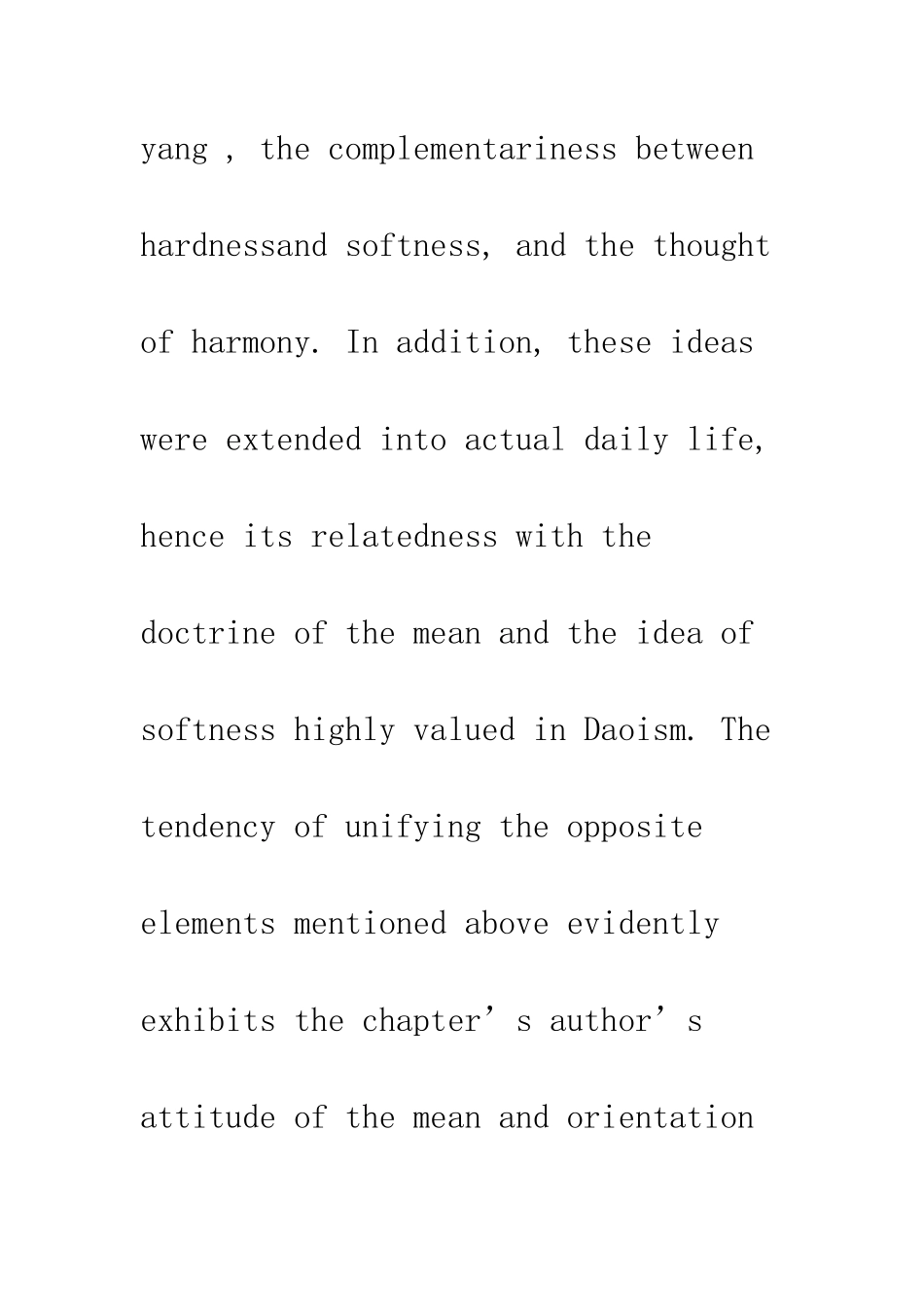帛书《易之义》键川、阴阳、刚柔、文武思想合论 摘要:帛书《易之义》通过对《周易》卦象的分析,探讨了键川、阴阳、刚柔、文武的意蕴,凸显了阴阳协调、刚柔相济、中和的思想。作者将这些思想的阐述,导入人生实践,这样便与《中庸》的庸常之道、道家贵柔主张具有相关性。其阴阳调和、刚柔有体而文武兼备的思想倾向,很能说明作者在人生领域的折衷态度和价值取向。 关键词:帛书《易之义》;键川;阴阳;刚柔;文武 Abstract:By analyzing the images of the hexagrams in the Zhouyi , the author of the chapter of Yi zhi yi of the silk manuscript of the Zhouyi discussed the implications of Qian-Kun , yin-yang , hardness-softness as well as civiland military affairs, stressing the balance between yin and yang , the complementariness between hardnessand softness, and the thought of harmony. In addition, these ideas were extended into actual daily life, hence its relatedness with the doctrine of the mean and the idea of softness highly valued in Daoism. The tendency of unifying the opposite elements mentioned above evidently exhibits the chapter’s author’s attitude of the mean and orientation of value in his social life. Key Words: Yi zhi yi in the silk manuscript; Qian-Kun; yin-yang ; hardness-softness;civil and military affairs 帛书《易之义》的最大特点,是通过对《易》之卦爻象、卦爻辞的解释,来阐明作者对《易》的理解。由于学术界尚无对《易之义》文本的系统阐述,故本文试图通过文本分析,将《易之义》的思想内涵揭示出来。 一、键川合论 《易之义》在论述阴阳文武之道时,对键川二卦,既有分说又有合论,而且合论往往是在分说的基础上进行的。《易之义》的键川合论,其核心思想,从自然观的角度说是阴阳合德,从政治哲学的角度说是文武并用。 阴阳合德 《易之义》开端即云:“易之义唯阴与阳,六画而成章。曲句焉柔,正直焉刚。六刚无柔,是谓大阳,此天[之义也。]……六柔无刚,此地之义也。天地相率,气味相取,阴阳流形,刚柔成□。”[1]此是从解释《易》之卦爻象入手,来证成阴阳合德的学说。这种学说的理论前提...


